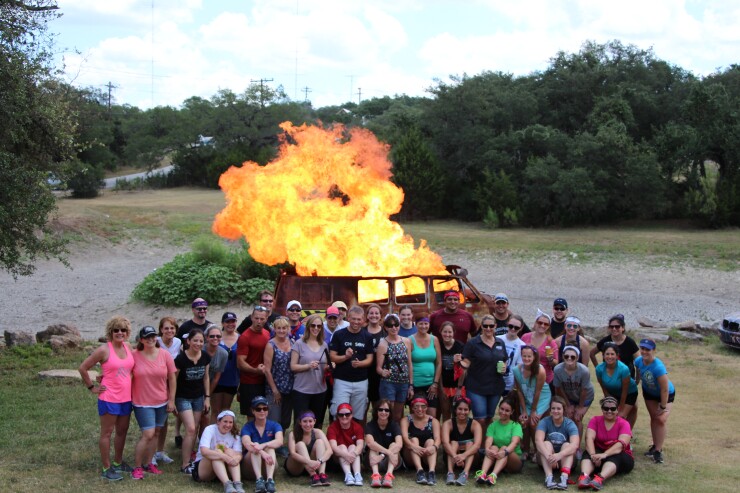Some employees just aren’t that into you.
In fact, according to Gallup News polls, employee engagement has been flat since 2000, and only 32 percent of U.S. workers were considered engaged in their jobs in 2015. So how do you create an environment where people want to come to work and actively help you achieve your vision?
As your company grows, this can be a challenge. In less than five years, our CPA firm of 18 employees grew by more than 120 percent and is now a midsized team of more than 45. Although the growth is positive, change has a palpable effect on the company culture and the relationships among staff. As a result, we’ve focused a number of efforts on reaping the upside of all this change and moving the organization quickly through it. Although we’ve maintained an 82 percent retention rate among employees over the last five years, keeping the staff engaged is an ongoing process.
Here are three ways we’ve invested in our company culture:
Strengths vs. Weaknesses
Most of us have spent a lifetime getting feedback on our weaknesses: red ink on school papers, coaches hollering when a play went horribly wrong, and those “in the future, you should focus on improving…” comments in annual reviews in the professional world. In 2015, we incorporated a strengths-based approach into our culture and it has empowered people, improved engagement, and increased productivity.
Our firm also sponsors strengths-based 1:1 coaching, which gives our teammates an opportunity to recognize and act on areas where they can excel. The process has brought staff closer, recognizing each other’s skill sets and talents. One employee who likes to collect and archive information has paired his skills with a firm-sponsored food blog to discuss issues that affect the restaurant industry, one of our key sectors. He’s doing something he enjoys while helping the firm with team building and promotion. There’s a reason why so many successful organizations are incorporating strengths into their culture. It’s changed how some staff work. For others, it’s changed how they view work. For many, it’s changed how they view themselves.
Nurturing Relationships
Our employees have thrown knives (not necessarily at each other), jumped off high platforms, and even raced in life-size hamster balls. It’s an example of our recent team-building investment where we shut down the office for a day and focused on building personal connections. Whether it’s a stunt ranch, zip-lining through the Texas Hill Country, or going on a downtown scavenger hunt, getting to know colleagues outside of the work setting is a great opportunity to strengthen relationships which pay off back in the office.

Another way we encourage collaboration is ensuring everyone has a team focused on their growth needs at each stage of their career, regardless of their role in the firm. From the moment an employee accepts our offer, a “buddy” is assigned to ensure their social integration—making sure they have someone to sit with at Crock Pot lunch, be the font of knowledge for all the “new person” questions, and explain all the things not found in the employee manual. Our Performance Stewards do just that—responsibly and carefully managing the performance of our teammates through coaching, feedback, encouragement and training opportunities. And our Champions, selected by the teammates themselves, help our folks take a long-term view of their careers and their life goals, and marry them up with organizational connection points. Perhaps most notably, this non-billable investment is valued by the firm and treated as a “must do” even during busy season.
Enhancing Prosperity
Every so often our firm’s partners randomly choose a name (out of an overly decorated bucket), and make a staffer’s dream come true. Seriously.
Marcus wanted to take professional cooking classes at Sur La Table, so we bought him some chef knives and sent him on his way. Amy wanted to see the Broadway play Hamilton in New York City, so the firm paid for her airfare, theater tickets and hotel for her trip to the Big Apple. Several other employees had skydiving on their bucket list, so they jumped out of an airplane and checked that off.
Our random drawing is just another way we show our staff that we appreciate them and want to be as engaged in their lives as they are with our company. These personal investments in their non-work dreams also encourage them to recharge their batteries and enjoy life.
One of my favorite things is watching a recruiting candidate ask, “What’s it like to work here?” Down to the last employee, their faces light up, as they describe why they choose to come here every day versus someplace else. And for each person, the story—the “why”—is different. But the outcome is the same and very simple: We have built an engaged workforce that steps up and produces great things for our clients.





